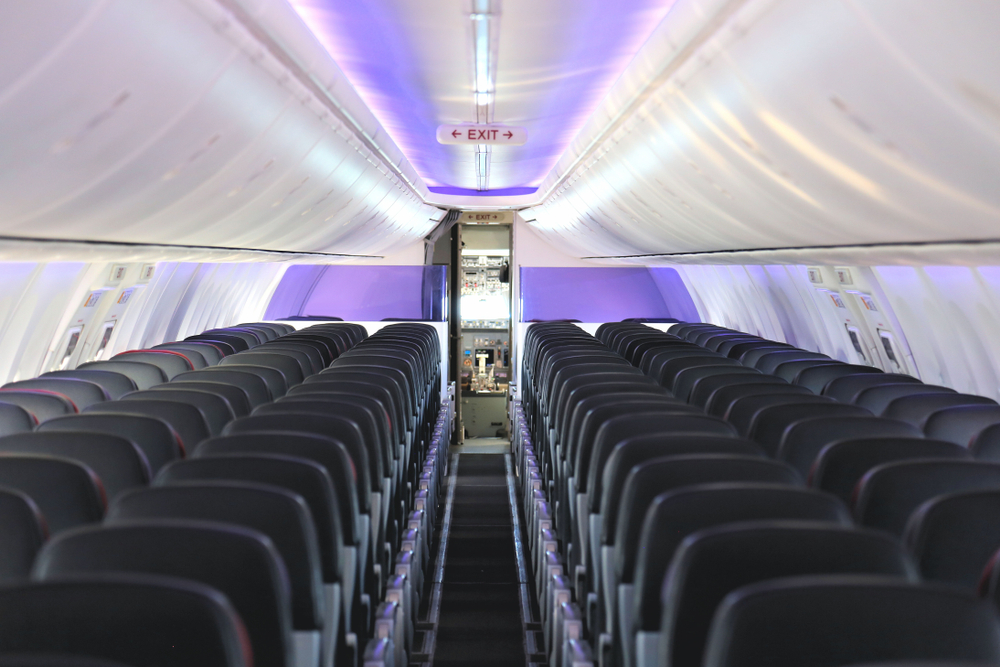So narrow, so far: how long distance point-to-point travel is changing the air travel market
Posted 08/10/2019 by Connor Doolittle

Think of long-haul flights, and you’ll probably conjure images of large, wide-body aircraft. Grand-scale transport for grand-scale travel. Due primarily to their farther range, wide-body aircraft have dominated long-haul air travel to date. But is that set to change?
The hub-and-spoke model
The hub-and-spoke model is the current standard for long-haul air travel, whereby flights either begin or end in one of the airline’s hubs. Today, this model of operation and route development is the preference of almost all legacy carriers. But why?
The pre-dominance of large, wide-body aircraft on long-haul routes puts pressure on airlines to fill seats. Typically, airlines fill these large planes by pooling demand from non-hub cities to a hub city, via connecting flights on narrow-body aircraft.
To date, legacy airlines have performed well under this system. However, with the rise of low-cost carriers (LCCs), point-to-point travel is becoming increasingly popular and profitable. LCCs are taking advantage of these under-served markets by foregoing the hub-and-spoke model and opening up new routes between non-hub cities.
Until now, the point-to-point system has failed to achieve similar success in long-haul markets, as the smaller point-to-point markets don’t provide sufficient demand to fill a wide-body long-haul aircraft..
Moreover, the operation of such aircraft is not efficient enough to support the LCC business model and their lower fares. But things are changing.
The first signs of disruption
With the release of the new A321LR, Airbus may have broken the long-haul constraint on point-to-point travel. The stated range of the aircraft is 7,400km, some 900km more than its Boeing competitor, the 737 MAX 8. This is a narrow-body plane that can travel farther.
The new Airbus aircraft is a potential game changer, allowing airlines to serve thinner long-haul routes. The plane’s transatlantic capabilities are already being taken advantage of by airlines on routes such as Dublin-Hartford and Porto-Newark.
Thus begins the descent for legacy airlines?
While legacy airlines may not welcome new competition from LCCs, this shift needn’t spell their end. Crucially, legacy airlines must also find a way to benefit from the evolution of narrow-body aircraft.
And there’s good news for legacy airlines, because there is an opportunity for them to capitalise on the changing long-haul market. We are seeing an increased trend in improved premium cabins on narrow-body aircraft. 13 airlines currently offer lie-flat seats on narrow-body planes, creating a strong luxury market.
With lower fares and new premium configurations, long-range, narrow-body aircraft will truly be able to challenge the dominance of wide-body aircraft. For consumers, this likely means considerable growth of direct, point-to-point, long-distance travel. But what will it mean for the wider industry?
The impact on industry
This plane is soon to be followed by the Airbus A321XLR, which boasts an even greater distance capability. The trend is clear. Fundamentally, this shift could change how airlines structure routes, as point-to-point travel becomes more profitable across longer distances.
The opening of new airline markets and the subsequent change of route structuring have important implications for airport planning. Smaller airports previously unable to support long-haul flights could see new routes and airlines, connecting new parts of the world.
Meanwhile, larger airports may see reduced demand, with fewer passengers requiring them for connecting flights. One way or another, legacy airlines are likely to see increased competition, as LCCs enter long-haul markets, thus impacting the viability of entire route networks.
What next for airports?
This market shift will require a critical review of traffic forecasts for non-hub airports. They must capitalise on the opportunity to identify potential new markets. The physical requirements will also need to be reviewed accordingly, with new geographical passenger markets calling for a re-think of commercial opportunities such as retail and duty-free.
Hub airports will also need to adapt. Forecast reviews are needed to identify potential impact to the utilisation of their facilities. More apron parking stands for narrow-body aircraft may be taken into account in master plans, and the development of low-cost facilities can help attract new market players.
For both airports and consumers, the next generation of narrow-body planes is opening up a world of opportunity.